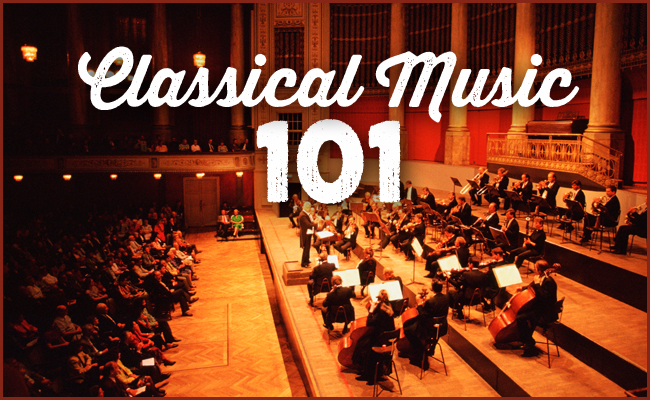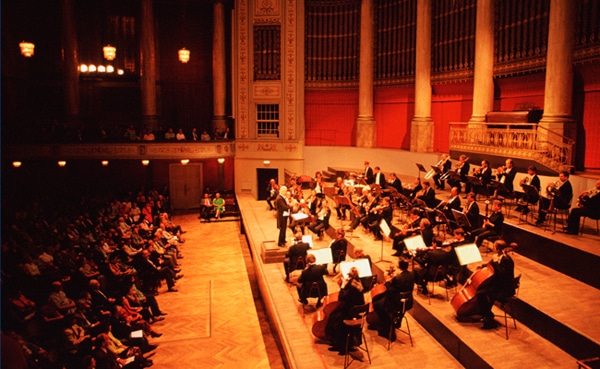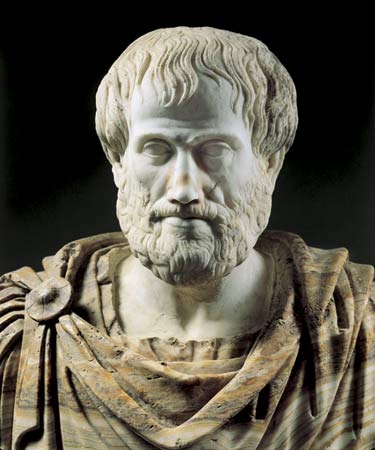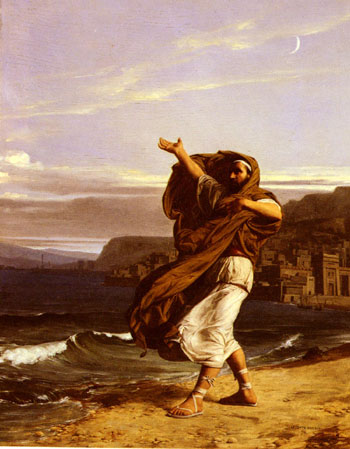
Welcome back to our series, Classical Music 101! Our goal with this series is to provide an approachable, non-intimidating introduction to classical music so you can start appreciating this timeless musical genre.
In our last article, we looked at the origins of classical music, beginning with the ancient Greeks and ending with the Renaissance. Western art/concert music, what we now popularly call classical music, began with simple monophonic chanting and developed more complexity with the introduction of polyphony as time progressed. A primary feature of early Western music was that it was voice-based — instruments were used sparingly. It wasn’t until the end of the Renaissance that Western music began shifting to become predominated by instruments.
In today’s article, we’ll take a musical tour of the Baroque era. Put on your powdered wig, and let’s get going.
The Baroque Era (1600-1750)
The Baroque era began roughly around 1600 with the composition of the first opera and lasted until the death of Johann Sebastian Bach in 1750.
The word “baroque” comes from Portuguese and means “irregular pearl.” It was originally used to unflatteringly describe the art, architecture, and music produced in the 17th and 18th centuries. Early critics thought the art, music, and architecture of the 1600s and early 1700s were too ornate and too flamboyant. But with time, “baroque” lost its reproachful meaning.
Baroque music is big, elaborate, intricate, and emotional while being governed by logic and order. The logic and order of Baroque music laid the foundation for musical notation and theory that we still use today.
It was also during the Baroque period that Western music began to be primarily instrumental. The harpsichord was a favorite instrument of Baroque composers. If you hear a classical piece with a harpsichord, chances are it’s from the Baroque era.
A funny aside about harpsichords: Conductor Sir Thomas Beecham, who wasn’t a fan of the instrument, once compared the sound of a harpsichord to “two skeletons copulating on a tin roof in a thunderstorm.” Lol. Sir Beecham has no chill.
What was behind the bigness, the ornateness, and the orderliness of Baroque music? Well, a few things:
First, the Baroque period saw the rise of monarchs with absolute power — think King Louis XIV of France. This centralization of power into a single individual led to a demand for architecture, art, and music that could enhance the prestige of a monarch and their royal courts. Composers were hired to write music that glorified the king and added to his larger-than-life image.
Second, during the Baroque era, you saw significant scientific advances. Newton discovered that laws and mathematics governed the universe. Musicians began to apply this scientific view to their music by writing pieces governed by logic, order, and math.
Third, in response to the Protestant Reformation, the Catholic Church began the Counter-Reformation that saw the embrace of music as a way to win souls. You start to see a shift away from plainchant music in churches towards elaborate, dramatic, highly emotional musical pieces designed to inspire religious awe in the listener.
Characteristics of Baroque Era Music
Counterpoint. Counterpoint is a technique of composing with interdependent yet independent melodic lines. A piece with counterpoint will have two lines of melody that can be played independently, but when put together, form a complex and cohesive piece of music rich in texture. The fugue is a musical form developed during the Baroque era that used counterpoint. Here’s an example of a fugue that showcases counterpoint beautifully. Note how complex and textured it sounds:
Basso continuo. Basso continuo is a continuous bass line that provides a rhythmic backbone for all the variety and complexity in a Baroque piece. Here’s an example of basso continuo (it’s Dutch; the cello and double bass provide the basso continuo):
Rhythmic patterns. Baroque music frequently features a driving rhythm that continues persistently throughout the piece. Rhythmic patterns established at the beginning are usually maintained to provide momentum and underpin the ornamental melodies.
Unity of mood. Baroque music typically has a single mood throughout the piece from start to finish. It isn’t until the Classical era that you see fluctuating emotions in a single piece.
Baroque Musical Forms
The Baroque period saw the development of specific musical forms. We mentioned the fugue above. Other Baroque forms include the sonata, oratorio, cantata, and the concerto grosso.
The opera was the most important musical form developed during the Baroque era. Italian composers sought to revive the emotional resonance of the ancient Greek chorus with a stage spectacle that tells a dramatic story set to continuous music.
Key Baroque Composers
Claudio Monteverdi (1567-1643). Monteverdi is considered the bridge between the Renaissance era and the Baroque era. His most significant contribution to the Baroque era was the development of Italian opera. His most famous piece is his opera “L’Orfeo,” which premiered in 1607. It’s based on the Greek myth of Orpheus going to the underworld to save his beloved Eurydice. You can watch the whole thing here:
Antonio Vivaldi (1678-1741). Antonio Vivaldi was an Italian composer of the Baroque period and is best known for his vibrant and inventive instrumental compositions, particularly his concertos. His music is characterized by its energetic rhythms, bright melodies, and bold use of harmony and texture. Besides being a genius composer, Vivaldi was a violin virtuoso.
His most famous work was “Four Seasons” — a set of four violin concertos that depict scenes appropriate for each season of the year, complete with bird calls in “Spring,” a thunderstorm in “Summer,” a hunters’ dance in “Autumn,” and icy winds in “Winter.” Take a listen:
Johann Sebastian Bach (1685-1750). If you had to pick one composer who symbolizes Baroque music, that composer would be Johann Sebastian Bach. The guy was a prolific musician who pumped out fugues, cantatas, and oratorios like no one’s business.
Bach is known for his complex counterpoints, rhythmic variety, and emotional expressiveness. When you listen to a piece from Bach, you’re taken aback by how technical and ornate it sounds.
Here are a few pieces from Bach to check out:
George Frederic Handel (1685-1759). Handel was a contemporary of Bach who made a name for himself with his beautiful melodies and stirring use of choruses in his operas and oratorios. His most famous piece is his oratorio, Messiah. Its famous “Hallelujah” chorus captures the dramatic flair that Handel brought to his music.
Take a listen to the “Hallelujah” chorus from the “Messiah.” Boy, do I get a swelling feeling in my chest every time I hear it:
If you’re looking for more Baroque era music, take a listen to this great playlist on Spotify.
That’s it for today’s crash course. In our next article, we’ll take a look at the Classical era.
Tags: classical music






